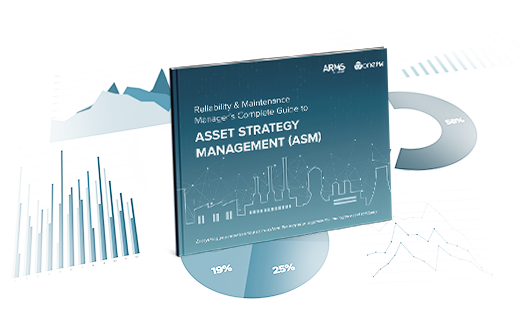It is a common misconception that Asset Performance Management (APM) and Asset Strategy Management (ASM) are essentially the same thing but understanding the differences can save you time and money and a lot of headaches.
It is easy to get confused by the difference between APM and ASM. Both are essential to asset management and performance and can help you build a culture of reliability. The terms are also used interchangeably to describe solutions which may fall somewhere in between what true APM or ASM should provide. To add to the confusion there are some products and modules that are named APM or ASM with differing levels of functionality in each area. That’s why it is important to understand the difference and know what you really need before you embark on any large-scale asset management or reliability initiatives.
What is Asset Performance Management?
APM is largely focused on asset condition assessment and monitoring. More specifically, APM is used to monitor inputs like temperature, pressure, and vibration, and uses increasingly sophisticated technologies like artificial intelligence and machine learning to predict impending asset failure.
The resulting data and alerts trigger maintenance interventions to keep assets performing as they should. In this way, APM can play an important role in your overall reliability strategy.
What APM doesn’t do, however, is evolve the reliability strategy of an asset to deliver performance and that’s where ASM comes into play.
What is Asset Strategy Management?
ASM is a best practice approach to managing your asset reliability strategies, organization-wide. Enabled by people, technology and data, ASM connects physical assets and independent plants and sites to a central system which allows you to effectively develop, implement, maintain and optimize asset strategies.
Implementing an ASM program ensures that reliability strategies are optimized to deliver the best balance of risk, cost and performance. It also ensures strategies are continually evolved based on real data, appropriate analysis and justification, and an effective review and approval process.
Which comes first?
In our view, everything you do should start with a strategy and that is especially true in this case as ASM provides a strong foundation for APM. It helps you establish a baseline for asset performance and determine where APM will deliver a return on investment.
Unfortunately, what we’re seeing is a lot of organizations choosing to dive right into APM and, without a strategy, they’re not seeing the results they need. This is forcing them to hit pause on their plans and go back and get their strategy in order.
Determining what you need
If you’re still not sure about the differences or what your organization needs right now, consider the checklist below on common challenges. If you are experiencing any of these challenges, then your first priority should be a clearly defined approach to ASM.
- Poor and at time unpredictable performance
- Poor cost control
- Asset reliability strategies are not reviewed or updated
- Your organization’s approach to strategy development is informal
- Your asset reliability strategies are subjective
- Poorly structured or incomplete Master Data
- Strategy work has a disregard for specific operating context
- Your reliability strategies are varied across like assets
- Lack of governance to agreed strategy (Maintenance execution does not match set reliability strategy)
- You use your EAM system or Excel to manage reliability strategy decisions
You can download the Complete Guide to Asset Strategy Management for more information, including tips to ensure your reliability program initiatives live up to their true potential.


